
Yes, the country lives in her own unique era. Yes, the country should be in your bucket list- for her much-revered traditional architecture and for feeling the pulse of nature where dramatic mountain landscapes, rivers and forests create an environment that smells ecstatically pure and evolves a soothing meditative aura. Yes, she is the small but mesmerizing Buddhist mountain kingdom of Bhutan- tucked on the upper terrains of the majestic Himalayas. Tradition and culture bring in a strong sense of pride and confidence in the citizens here. In order to come closer to the evolution process of this land generously pampered and gifted by nature, it would be relevant here to know that Bhutan is a Monarchy with a democratically elected government and a very strong and influential religious body of monks. What really enthralls you as a visitor is the respect and reverence given to heritage in the form of the numerous monasteries and the fortresses- addressed as Dzongs here. Said to be the only Vajrayana Buddhist nation in the world, the people have well preserved with sanctity the teachings of this form of Buddhism apparently based on a complex philosophical and ritual system meant to provide a path towards enlightenment, self- evolvement and protection from evil. It is no doubt the piety and powerful belief in this tradition which has evoked a harmony in their society and the coupling then with the pristine environment, has earned Bhutan the tag of being called ‘The Last Shangri-La’. You would nod in agreement soon after you land at the high-altitude airport of Paro said to be the most difficult commercial airport in the world.
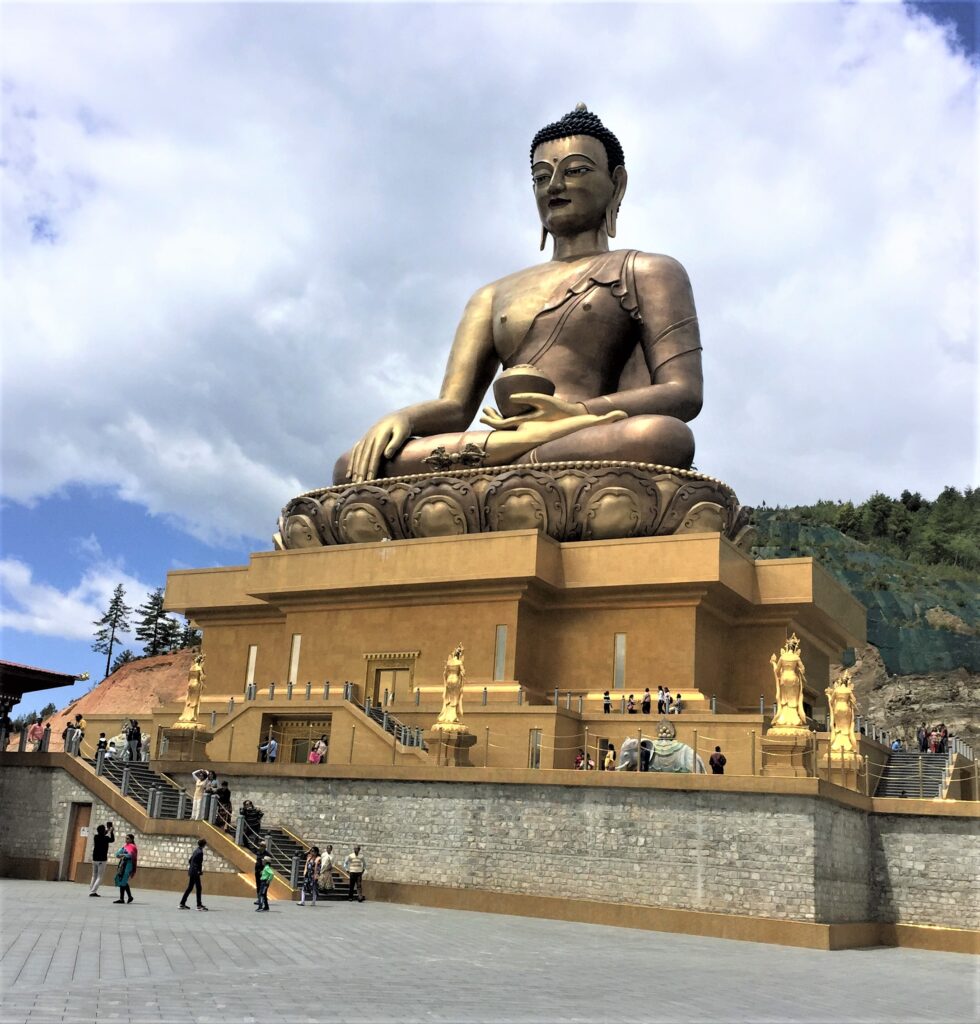

The natural sync between culture and architecture can indeed be felt here in the true spirit. Bhutan has a distinct genre in wooden architecture. History tells us that construction and design in the ancient times was not done on the drawing boards but visualized in the mind and often drawn on the ground by the skilled craftsmen. The unique and sensitively handled design and construction here, weather it be the fortresses referred to as Dzongs, the Chortens- the grand religious structures or then even the houses, adhere to a few basic norms- sloping roofs, small windows with decorative external fenestrations, colorful wooden doors, tapering external walls of mud or stone, framed wall, floor and roof systems, possibly a color-code and such others.
The pride of place in Bhutanese architecture belongs to the Dzongs. Originating in the 12th century, these politico-religious centres were earlier built on mountaintops also to act as fortresses and watchtowers during wars. These monumental structures with towering external stone/mud walls painted white and slanting inwards, are multi-functional and built around courtyards encompassed by a complex of temples, administrative offices and residences for the monks. The roofs which are gently sloping, have a small square shaped golden element on top placed on the corners of the roofs, and notably not allowed to be constructed on common houses and other buildings. Above all, the highlighting feature is that they were built without the usage of nails, cement and building plans. The functionality at the Dzongs has been an evolving one and so has been the restoration process. One gathers that a vast majority of these ancient structures got destroyed by fires but fortunately, with the earnest efforts of the government towards conservation and preservation, they have dexterously to a large extent, been restored to their past glory.
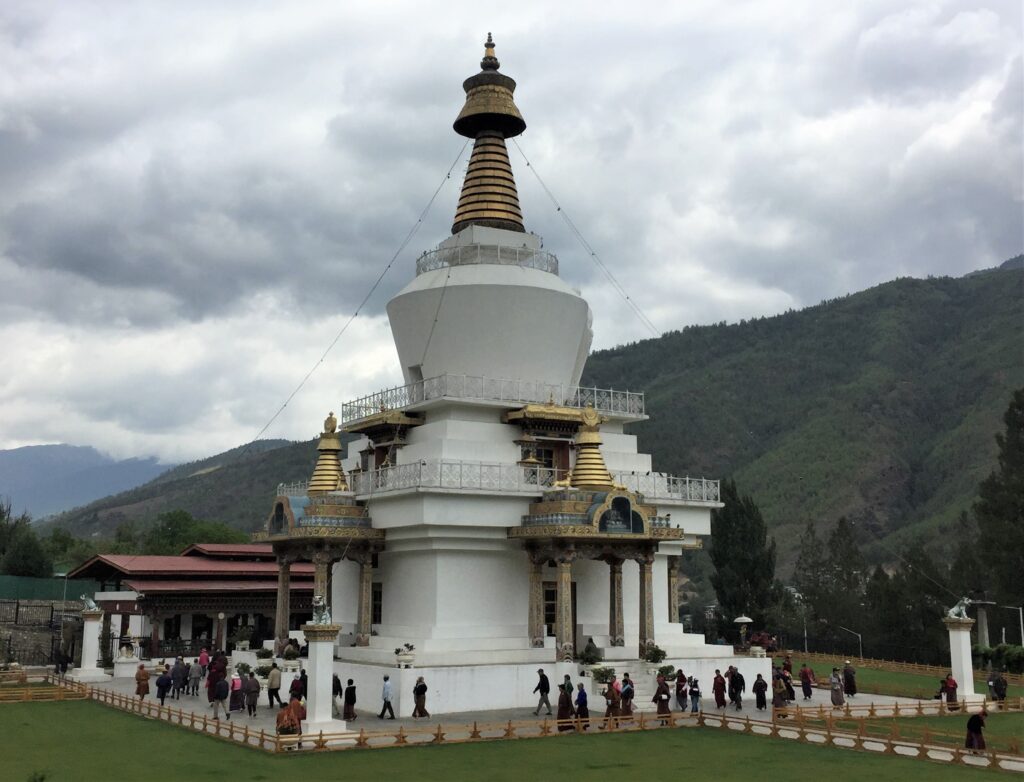
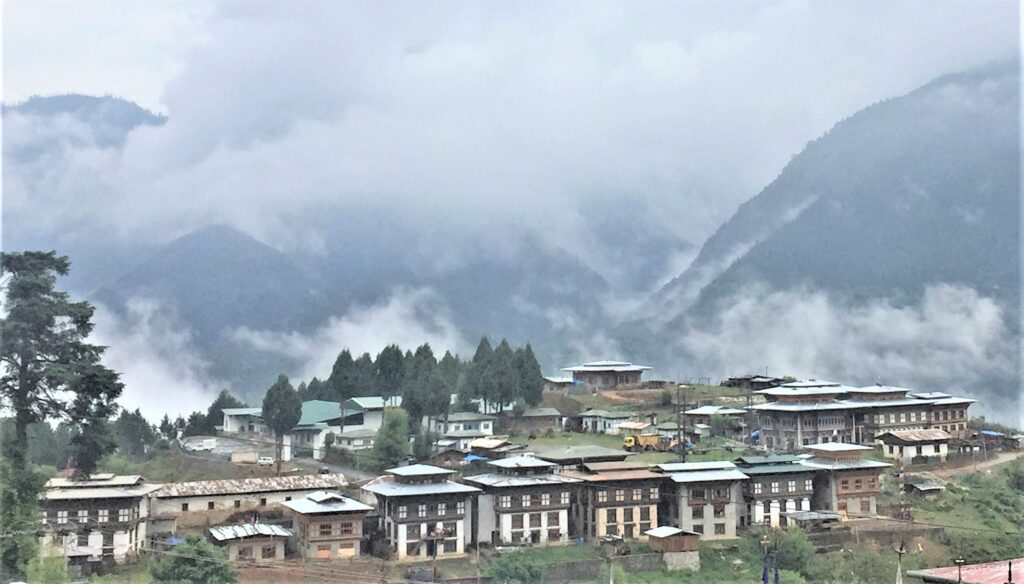
But the talk about their majestic and over-powering inherent design and emotive character wouldn’t be complete without a mention of the colorful yet somber and interior environs here. The voluminous inside spaces resonate a meditative aura with fine delicate craftsmanship on the pillars and the religious wall paintings depicting sacred tales from the past. Some traditional Dzongs are adorned also with creatively done swastika and phallic paintings. The countryside is dotted with these structures, but the Dzongs in the cities of Paro, Punakha and Tashichho particularly are truly reflective of the overwhelming positioning they enjoy in society and in the urbanscape/landscape of the cities.
Bhutan has had a long history with its neighboring country Tibet and considering the extraordinarily strong influence of Buddhism in the country, one can describe the architecture here as being Tibetan Buddhist style. The Chortens – grand religious structures believed to be blessed, aptly signify this style. Their construction has similarities to the Dzongs. Built on a square base with a dome, the interiors-awe lies in the cultural paintings, intricate statues of the deities and the religious inscriptions on the walls and pillars. The Bhutanese people look upon a visit to them almost like a pilgrimage. The Khamsum Yulley Namgel Chorten on top of a hill stands apart not only for its architecture, but also the commanding views of the upper Punakha valley. The exhilarating part of visiting these historic monuments is the exotic winding drive on the well-maintained roads in the forested majestic Himalayan ranges.
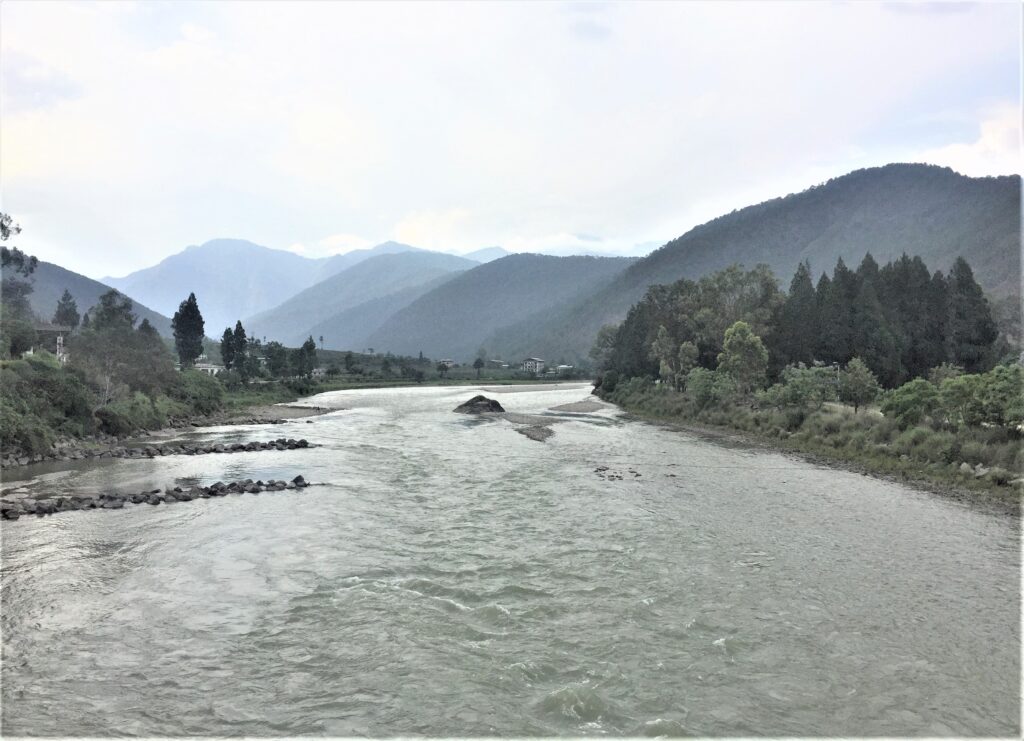
It is no doubt pleasing to the eye witnessing the love for colour, craft and texture as depicted by the Bhutanese on their house facades. It is not an uncommon site to come across a splash of well-defined graffiti in playful hues on the exteriors of the town/village houses – adding a happy mood to the royal landscapes of the valleys and constantly encountered towering mountain slopes/ridges. The wall-images depicted here and elsewhere in Bhutan, are also strongly related to their beliefs and faith- such as the paintings/illustrations of the phallus- regarded to be sign of good omen warding off evil. Apparently, it goes back to the Buddhist yogi Lama Drukpa Kuenley popularly known as the ‘Divine Madman’. A walk through the Sobsurka village to the Temple of fertility exposes you to numerous such colourful paintings on the exterior walls of the houses. You would also be able to buy them along with their painted wooden versions in the souvenir shops lining the streets of the village.
Though modern materials such as cement and concrete are available, the houses get constructed using traditional methods only using mud, timber, stone and rammed earth. The ground floor has always been designed to house the cattle and their fodder and the upper floors for residence where the interior décor is dominated with paintings and wooden handicrafts. Concepts for apartment housing are recent and limited to a few bigger cities and that too fortunately not boasting of tall high-rise buildings- going usually four to five floors maximum. Skyscrapers in any case are not visible nor allowed/encouraged by the administration. Like for other structures, the construction methodology for the houses also does not permit the use of nails and cement.
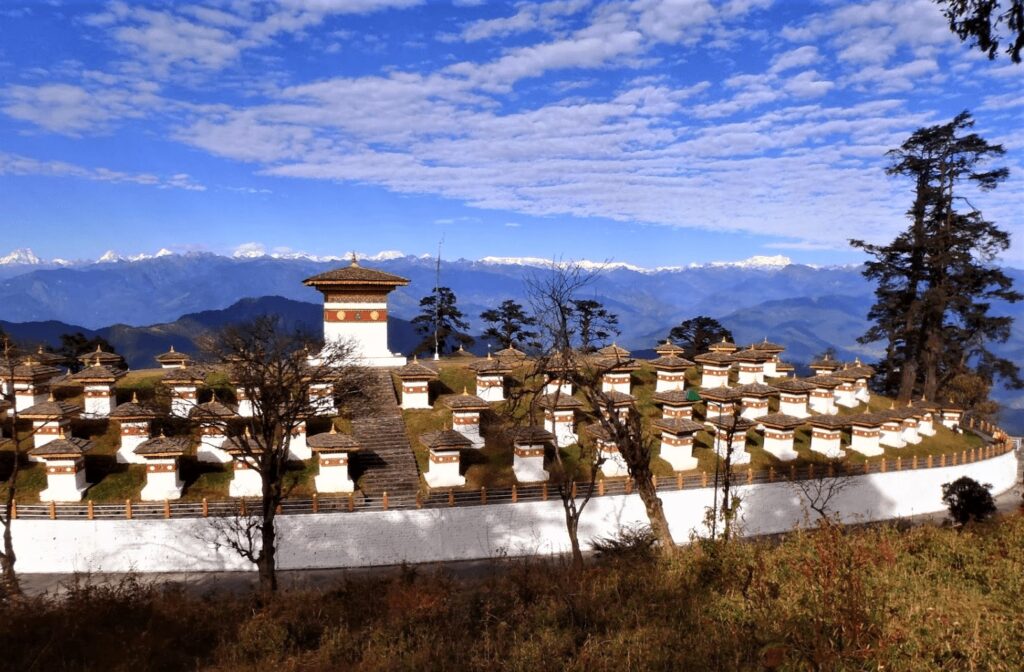
Bhutan, considered to be one of the greenest countries in the world, with a forest cover of 70% approximately, is already in the rare league of countries which are carbon negative. In global environs which is struggling to combat and reduce carbon emissions, according to figures, this Kingdom removes three times as much carbon-di-oxide as it emits. This commendable achievement, along with the advantage of the heavy forestation, also goes to the conscientious efforts of the government for the protection of the country’s rich natural environment. For the so many last decades, they have opted out to measure progress not by the ‘Gross Domestic Product’ but by the ‘Gross National Happiness’. They take it so seriously that it is enshrined in her constitution that a minimum of 60% of the total land would be maintained under forest cover for all time. Many lessons to be learnt indeed from this tiny country blessed with nature’s exotic aromas and intense natural flavors.
The main cities such as Thimpu-the world’s third highest capital(7500ft) and a political and economic hub, Paro, Punakha and Phuntsholing on the Indo-Bhutan border – are all perched in an exhilarating setting of valleys and awe-provoking grace of the super-tall mountain ranges. And incidentally, Thimpu is the only capital in the world without traffic lights. It also has in its vicinity the overpowering Buddha Dordena Statue which is tallest Buddha statue (169 feet) and the Dochula Pass which is home to 108 Druk Wangal stupas built as a memorial to the soldiers who lost their lives in battle. But the true Bhutan experience would be incomplete if one does not talk about the thrilling mountain drives across on well- maintained highways. The constant zig-zagging drives specially to the Phobjikha glacial valley at an elevation of 9800 feet is intoxicating and takes you to a landscape rarely witnessed for its starkness and fresh air. The black-necked cranes are frequent visitors here. The valley often gets equated with those in the Alps of Switzerland. Another staying memory is the five-hour inspiring trek to the Taktshang Monastry also referred to as the Tiger’s Nest temple. Apart from the breath-taking views en route to the monastery, the architecture imagery of this 17th century cliff-hanger is enthralling for its construction techniques.

These cities with a scaled down sedate and relaxed urban character are home to some of the most ancient monumental architecture of the monasteries, fortresses, stupas and Buddhist temples that embody the true spirt of Bhutan. And to expose both the tourists and the residents, selectively dotted are the government/private museums portraying folk heritage and rural history, traditional craft and libraries with ancient Buddhist manuscripts.
The country has kept herself aloof and isolated from external influences on purpose to retain her distinct cultural heritage, preserve the environment and live in an era which could possibly make the visitor filled with envy.
This Kingdom of just about eight lacks plus, takes care of the basic medical and school education needs of her citizens. A positive here is that despite the tough everyday mountain-life and a simple lifestyle, the Bhutanese carry themselves with a nationalist pride and smiling face. This thought gets endorsed when one observes that while on duty or work, male or female, they wear their elegant national dress with a charming dignity. They revere their Buddhist beliefs and hold the Royal family in high esteem as is exemplified in the stupas and the monasteries. While the deities here take the prime place, there is always placed alongside, a photograph of the King or the Royalty.
No doubt a haven for nature and architecture lovers.


